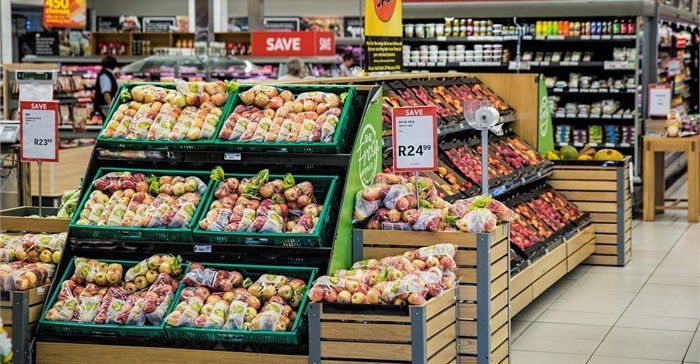
Top stories


Marketing & MediaCammy Msimango on finding her footing in South Africa’s fast-moving digital newsroom
Esther Tomorrow, MDNTV 21 hours




More news




This data emanates from NielsenIQ’s Market Track, the largest retail (grocery) data source in the country and the only currency used by all South Africa’s major retailers.
This benchmark data comprises more than 10,000 branded retail outlets (e.g. supermarkets and garage forecourts) and more than 143,000 independent stores (e.g. spazas and taverns) across South Africa’s nine provinces and measures more than 80% of all retail grocery transactions.
Total private label (retailer own brands) sales are now bigger than the two largest manufacturers in South Africa. This is borne out by NielsenIQ analysis which shows that the private label sector now commands 15% of all grocery sales in South Africa. This equates to R77bn in annual sales (12-months to 3 April 2022) and saw 8.6% growth in March 2022.
Rising inflation has become a hallmark of the Covid-19 era and has been exacerbated by the ‘perfect’ storm of the war in Ukraine and most recently the floods in KwaZulu-Natal – a key South African manufacturing and logistics hub. Annual consumer price inflation rose to 5.9% in March – from 5.7% in February – placing it just below the upper limit (6%) of the South African Reserve Bank’s monetary policy target range.
Transport, housing and utilities and food and non-alcoholic beverages were the most significant contributors, with transport contributing 2.1 percentage points to the annual rate. Fuel prices rose by an eye-watering 33.2% in the 12 months to March with petrol prices climbing by 32.6% and diesel by 35.1%.
Indonesia's decision to suspend palm oil exports in the face of domestic shortages has pushed vegetable oil prices to new highs. The prices of palm, soybean, European rapeseed and even its Canadian GMO counterpart, canola oil, have also reached historic highs.
“Given that vegetable oil is a raw ingredient in a wide range of products, varying from prepared meals to personal care, we are likely to see a negative knock-on effect of rising oil input costs,” says NielsenIQ South Africa MD Ged Nooy.
NielsenIQ data shows that South African cooking oil sales figures have unsurprisingly experienced a massive increase of 21% over the last year (52% during the past month). It has also experienced the highest price increases amongst the top 20 products measured in its data panel. As a result, the rate of price inflation on cooking oil is currently double that of the next category.
In addition, an in-store average shelf price check by NielsenIQ revealed that the average price of cooking oil was R42.76 per litre the week before the war in Ukraine started (20 Feb) and is now R54.70 p/L (vs the latest week 1 May) which represents an increase of R11.94 p/l.
Beer is South Africa’s number one FMCG product category in terms of sales and has experienced significant growth over the last 12 months, while soft drinks are down from the number one position, having experienced 8% annual growth and 12% in the last month. Cigarettes are the third largest product category has grown by 63% over the last 12 months and 8% in the 5 weeks ending 3 April 2022.
Nooy cautions it’s important to view the data in context. “The globally unprecedented prohibition on the sale of liquor and cigarettes during the 2020 and 2021 Covid-19 lockdowns in South Africa have resulted in those sectors experiencing high growth rates off previous low, and in certain months, nil bases.”
The only product in the Top 10 displaying negative sales figures is sugar; sales of which have declined by 2% over the last year. Adding to this bitter pill is that the South African Cane Growers Association reports that the local sugar industry has lost more than R223m after the unprecedented floods in April 2022 that caused damage to thousands of hectares of cane crops.
Long life milk and instant coffee sales are currently experiencing flat sales and low inflation. This follows a boom in sales of these items during South Africa’s lockdowns when consumers were primarily working from home and were stocking up on these items, instead of the coffee breaks they would normally take at their offices. Now that consumers have moved to a hybrid working model, or returned to the office full time, sales have plateaued.
The beverage category has also only experienced a 2% price increase. This category has been able to curb price increases thus far due to a decision by Government to delay an increase in the sugar tax. There have also been considerable pack dynamics at play with consumers shifting pack sizes as opposed to forgoing their favourite cooldrink, for example.
Nooy points out; “The retail sector has benefited from South Africa’s successive lockdowns. This stems from consumers prioritising in-home consumption, such as home-office related snacks and beverages and homemade meals, as opposed to out of home dining at restaurants. Government support measures including social relief grants have also contributed to boosting spending in the retail sector.
“However, the next 12 months will be interesting as the retail sector returns to normalised sales with the inclusion of liquor and cigarette revenue back into the mix which will allow for real year on year growth measurement and show a clearer picture of the true state of retail in South Africa,” says Nooy.